Join Our STEM Detective and His Feathered Friends in Our Build a Better Bird Nest STEM Investigation
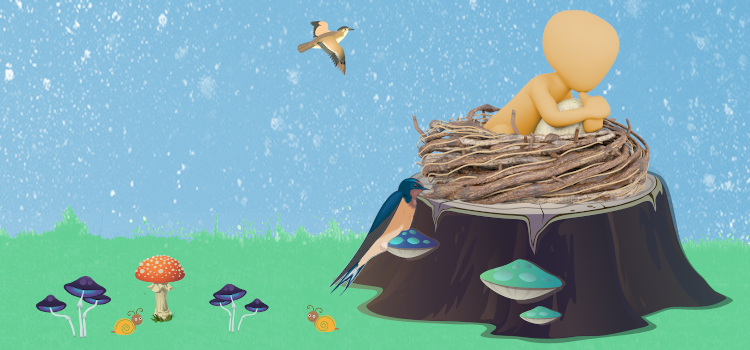
Go Straight to:
STEM and the Engineering Design Process Build a Better Bird Nest STEM Project
Printables:
Build a Better Bird Nest Parent/Teacher Guide Build a Better Bird Nest Student Worksheets
Bird Nests
There are over 700 bird species in North America and over 10,000 of them worldwide. That’s a lot of bird nests built each year. Different bird species have different needs when it comes to their nests. Bird nests can be found anywhere from a rocky cliffside to an underground burrow. They can be camouflaged in a tree or adhered to your house in an area protected from the elements. There are countless ways you can inspire your kids to give bird watching a try, and our Build a Better Bird Nest STEM Project is one engaging, hands-on option.
The Great Backyard Bird Count
Every February since 1998, bird lovers of all ages have been able to participate in a massive 4-day citizen-science project sponsored by the Cornell Lab of Ornithology and the National Audubon Society. First launched in the United States, the Great Backyard Bird Count is held every year in mid-February. Participants record the number of birds and their species for at least 15 minutes, on at least one of the four days of the event. Not only has this event gone global, but each year the number of species recorded, the number of checklists submitted, and the number of participants continues to grow. Check out The Great Backyard Bird Count website for up-to-date information, instructions, bird lists, and more. And every checklist submitted by citizens like you and your kids will help the researchers at the Cornell Lab of Ornithology and the National Audubon Society.
The Great Backyard Bird Count of 2022 runs from February 18-21, and what better way to introduce your kids to this popular event than our Build a Better Bird Nest STEM Project. After that, join us and countless others as we record bird sightings from our own backyards.
STEM
Science, Technology, Engineering, and Math – or STEM – is an interdisciplinary approach in education used to help kids become critical thinkers and problem solvers. A key aspect of this project-based method of teaching is its focus on real-world problems. This approach should include collaborative, and hands-on opportunities for your kids as they use the engineering design process to find a solution to the problem at hand.
Engineering Design Process
In STEM, the engineering design process (EDP) is a crucial, iterative step-by-step approach your kids should follow as they work on a solution to the problem they’re about to tackle. There’s more than one engineering design process model out there. Which model, or variation of the model, you choose depends on your needs, but keep in mind that the engineering design process is iterative. Kids will cycle through some of the steps multiple times as needed once they start testing their solution.
The Engineering Program at the Museum of Science, Boston, developed their 5-step engineering design process to be easily understood by the younger kids they would be using it with. You can learn more about each step (ask, imagine, plan, create, and improve) on their “Engineering Design Process” overview page.
NASA’s Beginning Engineering Science and Technology (BEST) educators originally adopted the above engineering design process with one modification – the addition of the experiment step. These educators didn’t add this step because kids who used the above model didn’t experiment (test) their designs, they added it to highlight the importance of this step in the process.
NASA’s new BEST model further improves their engineering design process with the addition of the share step, the renaming of the experiment step to test step, and the ability of the new model to be both iterative and directional.
Our “Engineering Design Process” diagram is based on NASA’s new BEST model.
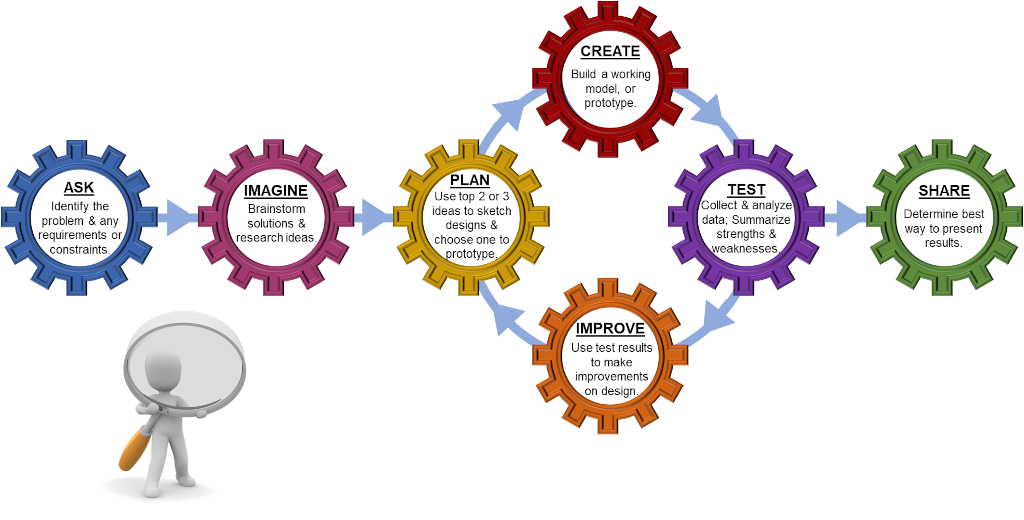
Build a Better Bird Nest STEM Project
Printables:
Build a Better Bird Nest Parent/Teacher Guide Build a Better Bird Nest Student Worksheets
Types of Nests
| Type of Nest | Description | Habitat | Materials Used | Bird Species |
|
|---|---|---|---|---|---|
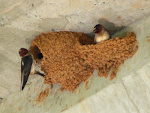 | Adherent | Nests that are attached (stuck) to vertical structures | Bridges, buildings, cliffs, trees, etc. | Bird saliva, mud, etc. | Barn swallows, swifts, etc. |
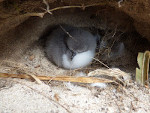 | Burrow | Nests that are in the ground | Cliffs, sloping land, etc. | Feathers, grass, leaves, straw, etc. | Bank swallows, kingfishers, puffins, shearwaters, etc. |
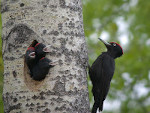 | Cavity | Nests that are built in natural cavities or those excavated by the bird | Dead trees, live trees, other natural cavities, etc. | Leaves, dried grasses, feathers, fur, moss, pine needles, etc. | Primary cavity nesters, such as nuthatches and woodpeckers, excavate their own cavities Secondary cavity nesters, such as bluebirds, chickadees, hornbills, owls, and parrots, use natural cavities |
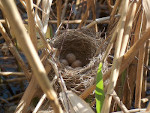 | Cup | Nests that are shaped like a cup | Bushes, ledges, shrubs, tree branches, vines, etc. | Twigs, grass, leaves, or other rough material for the outside Mud, rotten wood, dung, spider webs, caterpillar silk, or their own saliva as sticky glue to hold materials together Moss, fur, feathers, even cotton for soft inside | American goldfinch, barn swallows, hummingbirds, robins, yellow warblers, etc. |
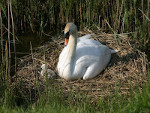 | Ground/Mound | Nests that are built from a carved out hole in the ground | Along the shoreline, near rocks, on islands, under tall grasses or low-growing brush, etc. | Branches, grass, leaves, mud, rocks, twigs, etc | Some birds, such as ducks, geese, penguins, and quail, keep their nests lower to the ground while other birds, such as swans and flamingos, build their nests up higher into a mound |
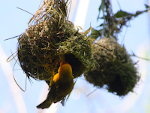 | Pendant | Nests that are intricately woven into elongated shapes | Suspended from branches, woven onto reeds, anchored to a tree trunk, etc. | grapevines, grasses, plant fibers, strips of bark, etc. | Orioles, sunbirds, weavers, etc. |
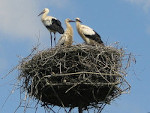 | Platform | Nests that are large and often bulky | Cliffs, man-made structures, trees, water, etc. | Bark strips, cattails, sticks, twigs, reeds, mud, etc. Lined with grass, moss, plant stalks, seaweed, etc. | Bald eagles, hawks, loons, osprey, etc. |
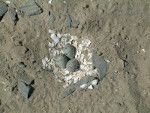 | Scrape | Nests made from depressions on the ground or in leaf litter | Caves, crevices, ledges, near water, etc. | Bare ground, leaves, stone, etc. | Nighthawks, seagulls, shorebirds, terns, vultures, etc. |
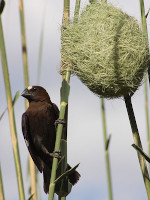 | Sphere | Nests that are spherical in shape, almost completely enclosed, with only a small entrance into the structure | Boulders, cliffs, marshes, on (or close to) the ground, | Bark, cattails, grass, leaves, moss, rushes, etc. | American dippers, marsh wrens, meadowlarks, thick-billed weavers, winter wrens, etc. |
Parent/Teacher Guide
Challenge
Design and build a functional bird nest for a designated bird species. Determine the following information during the research portion of the project.
- Nest type
- Typical habitat
- Nesting material used
- Size of the nest – calculated by the size of the designated bird species & it’s typical brood size
- Strength of the nest – determined by the weight of the adult bird(s) & the number of eggs/chicks
- The durability of the nest – the nest needs to hold up against the wind, rain, major storms, etc.
Note: A list of useful resources can be found in our Resources tab.
Objective
- Demonstrate the ability to work through the engineering design process as a group.
- Research and analyze the data on the assigned bird species’ nest type.
- Research and analyze the data on the assigned bird species’ nest construction, including but not limited to:
- Preferred nest location (habitat)
- Nesting material
- Calculate the nest size needed using the size of the assigned bird species, its brood size, and the size of its eggs.
- Construct a bird nest similar to how the designated bird species’ nest is built.
- Confidently and thoroughly discuss the group’s findings and build process.
- Answer any questions after the discussion section.
Vocabulary
Ornithology, species, brood, adherent, burrow, camouflage, pendant, scrape, habitat
Materials Needed
The materials needed for our Build a Better Bird Nest STEM Project will differ based on the age of your kids, the amount of time available, and the natural material in your area.
1. Craft Supplies That Mimic Natural Nesting Material
If you’re working with younger kids or there is a lack of natural material in your area, you can set up a craft table where your kids can select the materials needed to build their nest type. This table can include alternative items to represent what the actual bird would use. You can include items such as clay, pipe cleaners, feathers, string, cotton, fake grass, fake moss, small pebbles, etc.
2. Natural Nesting Material Gathered in Advance
If time or location issues prevent your kids from being able to gather the natural material they need, you can gather the supplies in advance, and set up a natural material table. This table should include grass, leaves, straw, pine needles, mud, etc.
3. Natural Nesting Material Gathered During a Nature Walk
If you have the time and ability to take your kids on a nature walk, let them gather the natural material they need themselves – after they’ve brainstormed on their designated bird species and drawn up a few nest design ideas.
Procedure
How you use the procedure steps below will be determined by the age of your kids and the amount of time you have available to work on this project. If you’re using this project with your kids in January or early February, you can include a discussion about the Great Backyard Bird Count (discussed at the beginning of our Build a Better Nest STEM Project blog post).
1. Gain your kids’ interest in bird nests at the start of this project.
Read an age-appropriate story about bird nests, then finish the introduction with some birds nest fun facts. For example:
- Many hummingbird species use spider silk to hold their nests together which allows the nest to expand as the baby birds grow.
- Birds have been known to build their nests in some pretty unique locations, including mailboxes, dryer vents, and traffic signals.
- Bald eagles build very strong nests they’ll use and add on to year after year. One eagle nest was recorded to be 20 feet deep and weighed roughly 2 tons.
2. Engage your kids in a discussion about their personal experiences.
Spend a few minutes talking with your kids to see what types of experiences they’ve had with birds.
- Have they seen a bird gathering material for a nest?
- Have they ever seen a nest on the ground after a storm?
- Do they have a favorite backyard bird they like to watch?
- How many of your kids have a bird feeder or two at home?
Encourage your kids to actively engage in this discussion.
3. Discuss the Engineering Design Process with your kids.
If this is the first time your kids will be following the engineering design process, spend time discussing each step in the process. Finish this discussion with how these steps fit in with this project.
If your kids have used the engineering design process before, spend a few minutes reviewing the steps followed by how you expect them to be used with this project.
4. Divide your kids into small groups.
What size groups should you use? That can depend on the age of your kids, but as you divide them into groups keep their strengths and weaknesses in mind. Pairing the right kids together can add to the positive experience with STEM activities.
5. Assign a designated bird species to each group of kids.
Whether you assign each group a designated bird species, or you let the kids choose from a list of options, our Types of Bird Nests table can help. For more thorough coverage of the types of bird nests during the sharing portion of this project, you may want to assign each group a bird species with a different nest type.
6. Have each group of kids research their designated bird species.
Our Resources tab contains a list of books, websites, and apps to help get your kids started. You can also have them use the worksheets provided to keep track of their progress.
7. Have each group of kids sketch some nest design options for their designated bird species.
These designs should take the following features into consideration.
- The size of the nest needed.
- The strength and durability required to hold the weight of the bird(s) and their eggs.
- The strength and durability needed to stand up to local weather patterns.
- The type of materials the designated bird species uses.
8. Gather the nesting material.
- Take a nature walk to gather nesting materials.
- Gather enough natural materials prior to the lesson to save time, and spread these supplies out on a side table for the kids to choose from.
- If you don’t have access to natural materials, create a craft supply table for the kids to use instead.
9. Have each group of kids build their nest together as a team.
Remind your kids that birds build their nests without the use of hands. Prompt them to include some of the interesting methods their designated bird species use to construct their nest during the sharing portion of this project.
10. Test the nests for strength, durability, and accurate size.
Have each group of kids test their nest by mimicking a day in the life of their designated bird species.
- Place items from the classroom into the finished nest to mimic the size and weight of the designated bird species and their eggs.
- Mimic a variety of weather patterns.
11. Redesign weak points.
Have each group of kids loop through the design and testing phase of this project until a useable nest has been built.
Sharing
Once complete, each group should create a report to share their findings. Be sure to have them include how they used the engineering design process to help them build a better bird nest.
Resources
Books
Follow Bird as she builds her nest, turning round and round, using her body to make herself a snug little cup nest (Age 4 – 6).
2. The Best Nest by P.D. Eastman
Mr. & Mrs. Bird’s search for a better nest leads them on a crazy journey (Age 4 – 7).
3. This is the Nest That Robin Built by Denise Fleming
A robin builds her nest with the help of her animal friends, each contributing a key component to her sturdy abode. Denise Fleming wrote with a cumulative, alliterative, and rhyming text (Age 2 – 8).
4. Mama Built a Little Nest by Jennifer Ward
A science picture book featuring different kinds of bird nests, each with a four-line rhyming verse as well as a few sentences with additional information, at a higher reading level (Age 4 – 8).
5. Birds Make Nests by Michael Garland
A colorful book that introduces over twenty species of birds and the homes they make (Age 4 – 8).
6. Bird, Nests & Eggs by Mel Boring (take-along guide series)
A fun, informative take-along guide that helps your kids identify fifteen different birds. They will also learn how and where these birds build their nests (Age 5 – 10).
7. National Geographic Kids Bird Guide of North America by Jonathan Alderfer
This guide features profiles of 50 of North America’s most popular birds, including how and where they live with an additional 100 mini-profiles of other birds. Full of fun facts, full-color photos, and activities (Age 8 – 12).
Websites
1. National Audubon Society
- Homepage: https://www.audubon.org
- Searchable Bird Guide: https://www.audubon.org/bird-guide
2. Cornell Lab of Ornithology
- Homepage: https://www.birds.cornell.edu
- Searchable Bird Guide: https://www.allaboutbirds.org/guide/search
3. Great Backyard Bird Count
- Homepage: https://gbbc.birdcount.org
Bird Apps With Nesting Information
1. Audubon Bird Guide by National Audubon Society
The Audubon Bird Guide is a free app with over 800 species of North American birds that you’re able to download (~350 mb) for those hikes without a cellular connection available. You can enter bird sightings, see other sightings recorded nearby, and post your bird photos to share with others. The field guide contains bird calls, seasonal range maps, and in-depth data on the different bird species. The field guide section includes nesting information that your kids will find useful for this project.
Note: This app requires your email address.
2. iBird Yard+ Guide to Birds by Mitch Waite Group
The iBird Yard+ Guide to Birds is a free app that consists of 270 bird species of North America. This app may not contain all the North American bird species, but it’s free, and it’s a nice little app that includes the nesting information your kids can use if their bird species is one of the 270 birds in the app.
3. iBird Lite Guide to Birds by Mitch Waite Group
The iBird Lite Guide is a free app designed to grow. Check out the 50 common North American bird species included with the app, see if you like what you see, and if you do, you can purchase updates as you get more serious with birding.
Bird Tracking Apps
The following apps are for tracking & reporting only, but they could be useful if you’re looking for a follow-up project for your young ornithologists.
1. NestWatch by The Cornell Lab
The NestWatch is for tracking nesting birds and includes an informative and useful Code of Conduct (the Do’s and Don’ts of Nest Watching).
Note: This app requires you to create an account, but this account will also give you access to Bird Academy, Birds of North America, Celebrate Urban Birds, eBird, Great Backyard Bird Count, Project FeederWatch, and Macaulay Library.
2. Merlin Bird ID by The Cornell Lab
The Merlin Bird ID app is a free app that helps you identify over 4,500 bird species from multiple countries by answering a few questions or using a photo of the bird in question. This data is available through downloadable Bird Packs available by region.
Note: This app requires your email address.
